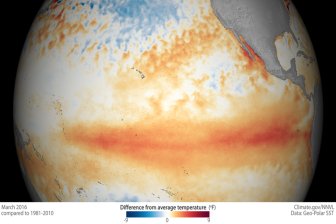When the atmospheric rivers hit southern B.C. last November they caused the ancient body of water, Semá:th X̱ó:tsa (Sumas Lake) to re-emerge.

The lake near Abbotsford was drained decades ago for agriculture.
A new report from Raincoast and the Sumas First Nation has now found the surge of water and the emergence of the lake caused contaminants in the region and the nearby fish habitats.
The study “documented an astounding diversity of contaminants including excess nutrients, metals, fecal coliform, hydrocarbons, pesticides, pharmaceuticals and personal care products, perfluorinated compounds, sucralose and tire-related chemicals in fish habitat.”
Peter Ross, senior scientist and Healthy Waters Program director with Raincoast, said, “The question to know is whether the floods released a torrent of pollutants into fish habitat.”

Raincoast Conservation Foundation, with their partners, took samples of water in the former Semá:th X̱ó:tsa (Sumas Lake) area over a seven-week period following the floods.
Twenty-nine surface water samples were collected, and 379 analytes were examined, including 262 anthropogenic contaminants.
An average of 87 analytes were detected at each sample location, of which 20 were anthropogenic chemicals not found in nature, the study found.
Samples showed multiple contaminants in the fish habitats, including excessive nutrients, metals, hydrocarbons and pesticides.
The report showed there was also widespread detection of cocaine, painkillers, and pesticides.
“Cocaine and its metabolite byproduct was found in every single sample,” Ross said.
“We found veterinary drugs, we found antibiotics, we found painkillers… we found diabetes and asthma medication.”

The lack of baseline data from before the floods makes it difficult to determine the extent to which the 2021 disaster may have impacted water quality, Raincoast said, but the degradation in the health of Sumas fish habitat became clear during this study.
The levels of fecal coliform were 641 times higher than the upstream reference site, pesticides were 135 times higher, pharmaceuticals were 60 times higher, nitrogen was 43 times higher, phosphorus was 19 times higher, and hydrocarbons were seven times higher, the report states.
“The former Semá:th X̱ó:tsa was once relied upon by our ancestors and provided many of the resources required to sustain our people. The November 2021 flood event demonstrated that the spirit of the X̱ó:tsa is alive and well and that we must learn to harmonize with Mother Nature today,” Murray Ned, executive director of the Lower Fraser Fisheries Alliance (LFFA) said in a statement.

Some of the main takeaways from the report include that the water quality in the Sumas Lake area is poor, fish are exposed to high levels of metals, pesticides and other contaminants of concern and the limited or inconsistent monitoring of water quality in B.C. means it is difficult to understand the risks associated with land use and the use of chemicals.
“Our report reveals a collective failure to protect water and fish habitat from contamination arising from multiple activities in B.C.,” Ross said.
“It is our hope that these findings contribute to innovation, stewardship and collective investment in green infrastructure that protects both communities and fish habitat.”
— with files from Paul Johnson
- Ont. First Nation calls for chemical plant to be shut down amid ‘dangerously high’ benzene levels
- Ottawa looks to launch national flood insurance program within 12 months
- Nova Scotia scraps spring bear hunt idea, public ‘very divided’ on issue
- Alberta, coal lobbyists talked for years about more open-pit mining in the Rockies: documents





Comments